Herbs bring life, fragrance, and flavor to any kitchen, and growing them at home is a rewarding experience. However, not every indoor space is flooded with sunlight. Many apartments, offices, and urban homes have limited natural light, making it challenging to grow sun-loving herbs like basil or rosemary.
The good news is that several herbs thrive indoors even with minimal sunlight. These herbs not only survive in low-light conditions but also flourish, providing fresh leaves year-round for cooking, teas, and herbal remedies. In this guide, we’ll explore five of the best indoor herbs for low-light spaces, along with care tips, potting guidance, and harvesting techniques.
1. Mint (Mentha spp.)
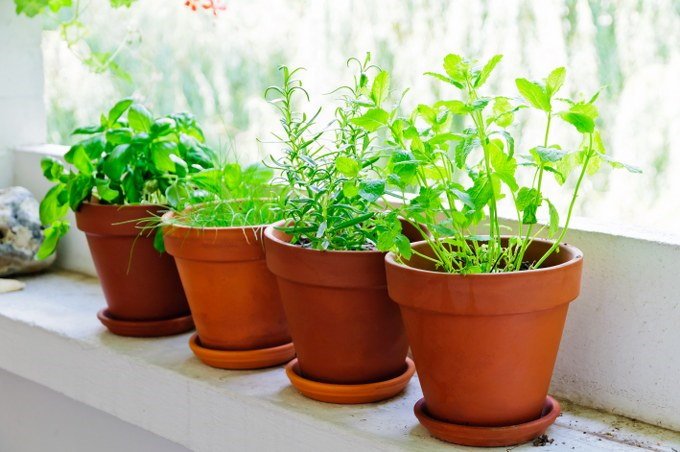
Why Mint Thrives Indoors
Mint is one of the easiest herbs to grow indoors, and it tolerates indirect light or partial shade. Its vigorous growth makes it ideal for containers and windowsills that don’t receive full sun.
Care Tips
- Light: Prefers bright indirect light but grows well with just 3–4 hours of sunlight or fluorescent light.
- Soil: Moist, well-draining potting mix rich in organic matter.
- Watering: Keep soil consistently moist but avoid waterlogging.
- Container: Grow mint in a separate pot to prevent spreading, as mint can be invasive.
Harvesting
- Pinch leaves regularly to encourage bushy growth.
- Remove flower buds to keep energy directed toward leaf production.
Uses
- Culinary: Teas, salads, mojitos, sauces.
- Medicinal: Relieves indigestion and headaches, freshens breath.
2. Chives (Allium schoenoprasum)
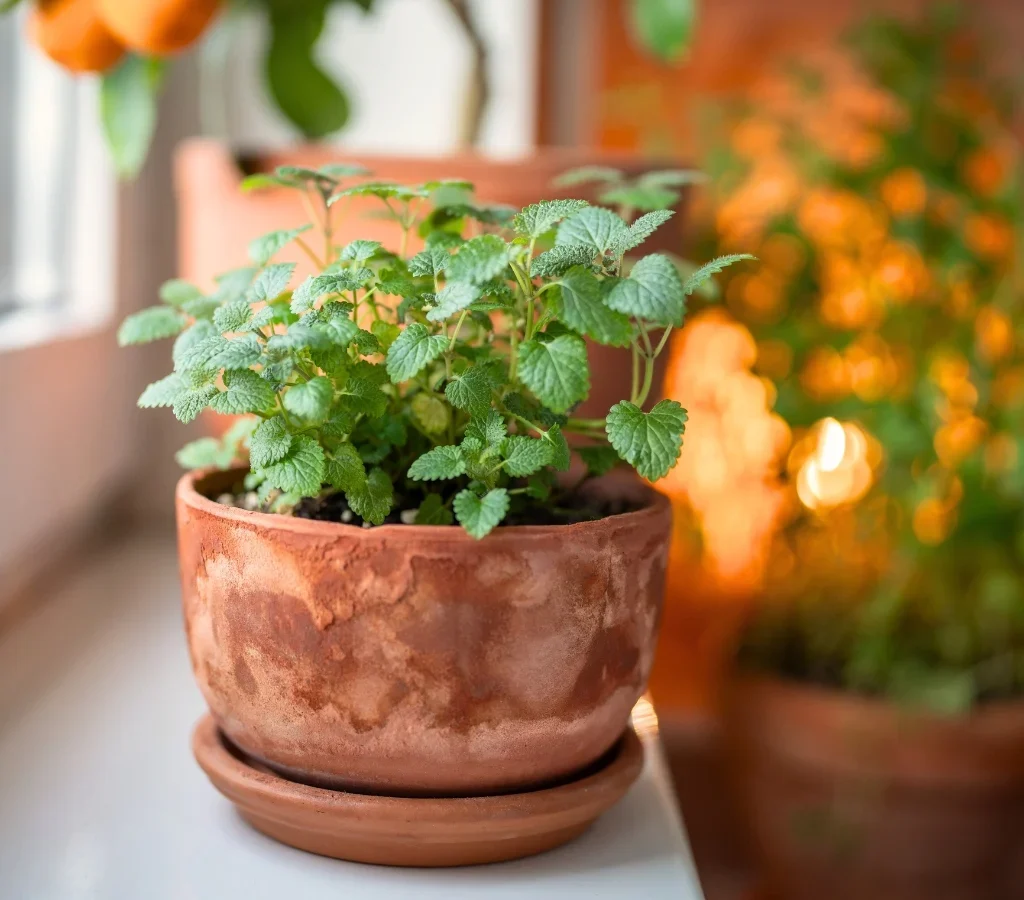
Why Chives Are Perfect for Low Light
Chives are hardy, shade-tolerant, and compact, making them ideal for indoor cultivation. Their thin, tubular leaves add fresh flavor to a variety of dishes.
Care Tips
- Light: Thrives with 4–6 hours of indirect light. Grow lights work well in darker spaces.
- Soil: Well-draining potting soil with moderate fertility.
- Watering: Keep soil slightly moist; don’t let it dry completely.
- Container: A small pot is sufficient; chives are slow-spreading indoors.
Harvesting
- Snip leaves from the base using scissors.
- Frequent harvesting encourages continuous growth.
Uses
- Culinary: Soups, omelets, dips, garnishes.
- Decorative: Adds greenery to windowsills and indoor herb gardens.
3. Parsley (Petroselinum crispum)
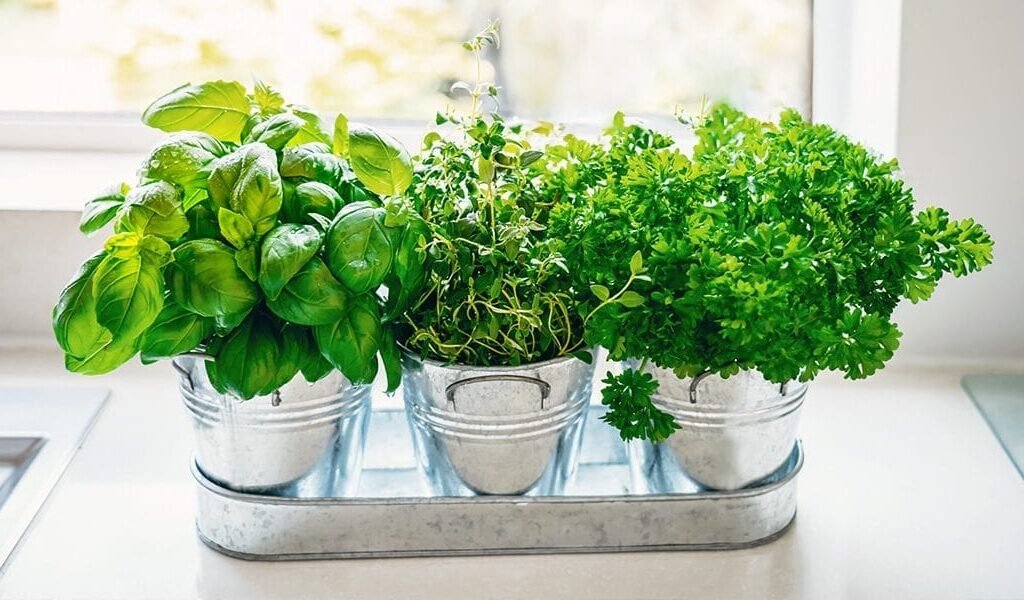
Why Parsley Works Indoors
Parsley is versatile and grows well in low to moderate light, making it suitable for indoor pots. Both curly and flat-leaf varieties thrive with minimal sunlight.
Care Tips
- Light: Indirect sunlight or 4–5 hours of filtered light per day. Supplement with artificial light if needed.
- Soil: Moist, fertile, well-draining soil.
- Watering: Water regularly to keep soil consistently moist but not soggy.
- Container: Deep pots are ideal to accommodate the taproot.
Harvesting
- Harvest outer leaves first, leaving inner growth to continue producing.
- Pinch flowers to prolong leaf production.
Uses
- Culinary: Soups, stews, salads, sauces.
- Medicinal: Rich in vitamins A, C, and K; supports immune health.
4. Lemon Balm (Melissa officinalis)
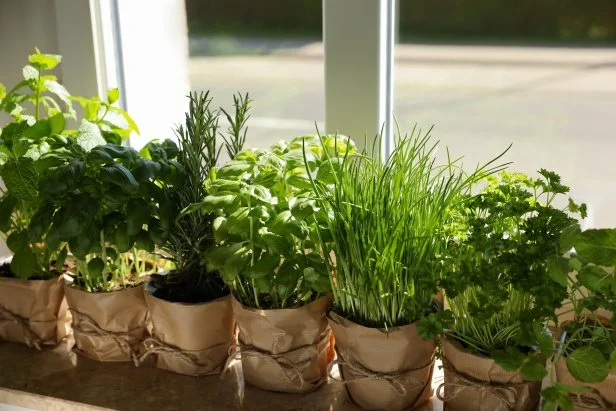
Why Lemon Balm Thrives Indoors
Lemon balm is a hardy, aromatic herb that grows well in low-light conditions. Its lemon-scented leaves are ideal for teas and culinary flavoring.
Care Tips
- Light: Thrives in partial shade or filtered sunlight.
- Soil: Moist, well-draining soil; tolerate average indoor potting soil.
- Watering: Keep soil evenly moist; avoid letting the top layer dry out.
- Container: Use a pot with good drainage; lemon balm can become bushy.
Harvesting
- Cut the top 2–3 inches of stems regularly to encourage bushiness.
- Remove older, yellowing leaves to maintain plant health.
Uses
- Culinary: Herbal teas, desserts, salads.
- Medicinal: Calming effects; aids digestion and reduces stress.
5. Thyme (Thymus vulgaris)
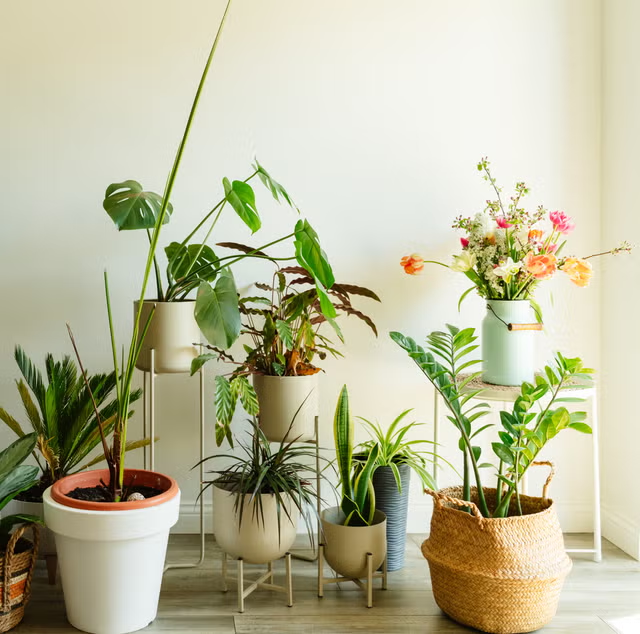
Why Thyme Grows Well Indoors
Thyme is a compact, woody herb that tolerates indoor shade better than many sun-loving herbs. Its hardy stems and small leaves make it ideal for low-light containers.
Care Tips
- Light: Prefers 4–5 hours of bright indirect light; tolerates partial shade.
- Soil: Well-draining, slightly sandy soil; avoid overwatering.
- Watering: Allow soil to dry slightly between watering.
- Container: Shallow pots with drainage holes work well.
Harvesting
- Snip stems just above a leaf node.
- Regular harvesting encourages new growth.
Uses
- Culinary: Roasts, soups, stews, marinades.
- Medicinal: Antimicrobial and antioxidant properties.
Tips for Growing Herbs Indoors With Minimal Sunlight
- Use Grow Lights
- For areas with very low natural light, use full-spectrum LED or fluorescent grow lights for 10–12 hours daily.
- Position lights 6–12 inches above the plants for optimal growth.
- Choose the Right Containers
- Use pots with drainage holes to prevent root rot.
- Select sizes appropriate to the herb’s growth habit (e.g., deeper pots for parsley).
- Soil Matters
- Well-draining, nutrient-rich potting mix ensures healthy roots.
- Add perlite or sand for better drainage if needed.
- Watering Techniques
- Avoid overwatering, which leads to fungal growth.
- Check soil moisture regularly; water when the top inch of soil feels dry.
- Pruning and Harvesting
- Regular pruning encourages bushiness and prevents legginess.
- Harvest frequently to stimulate new leaf growth.
- Temperature and Humidity
- Maintain indoor temperatures of 65–75°F (18–24°C).
- Average indoor humidity is sufficient, but herbs like mint and lemon balm benefit from occasional misting.
Benefits of Growing Herbs Indoors
- Fresh flavor year-round: Always have fresh herbs for cooking and beverages.
- Aromatic environment: Many herbs release pleasant fragrances that improve indoor ambiance.
- Health advantages: Fresh herbs are rich in vitamins, antioxidants, and beneficial compounds.
- Gardening with limited space: Perfect for apartments or urban homes without outdoor gardens.
Final Thoughts
Even with minimal sunlight, it’s possible to cultivate a thriving indoor herb garden. Herbs like mint, chives, parsley, lemon balm, and thyme are naturally resilient, forgiving, and low-maintenance, making them ideal for low-light conditions. By choosing the right containers, using proper soil, maintaining appropriate watering routines, and employing grow lights if necessary, you can enjoy fresh, aromatic herbs year-round.
Indoor herb gardening not only enhances your cooking but also brings natural greenery, pleasant scents, and wellness benefits to your home environment. With careful attention and consistent care, even the shadiest corner of your home can become a flourishing indoor herb garden.
